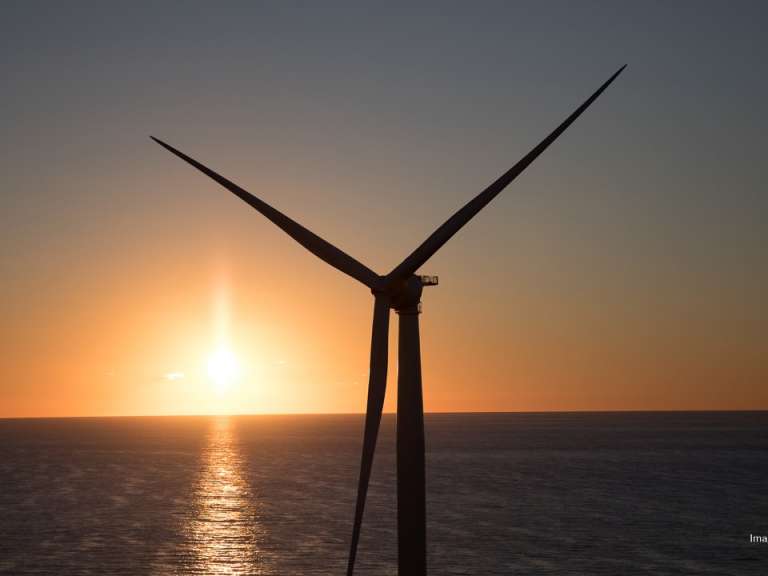Energy Industry Trends: A Year in Review
Alex ForbesHere's an update on our popular "5 Energy Industry Trends in 2017" piece, published at the start of the year.

In February, we took a look at five energy industry trends in 2017. It was initially unclear how the new administration would affect these trends. However, recent policy shifts have done little to slow the decarbonization of energy systems.
Decarbonization is proving to be robust against policy reversals. It underlies the many strands of the ongoing transition to a less carbon-intensive energy economy. This transition is increasingly becoming more about making economic sense than going along with prescriptive policy or relying on subsidies. Against this backdrop, here's a reexamination of the five trends that Transform highlighted at the start of 2017.
The assertion that distributed generation is approaching critical mass has stood the test of time. As two-way power grids give more and more consumers the opportunity to sell
How should investments made by utilities to facilitate this trend be incentivized? What is the fair rate to pay consumers for the power they feed back into the grid? How does the traditional utility model need to evolve to accommodate these new realities? These questions and others are still a matter of much debate within the industry and beyond—but at least they're being asked.
The technologies that make two-way power flows possible and commercially feasible are also relevant to demand-side response (DSR) in the sense that a megawatt saved is as good as a megawatt generated. In the past, DSR has been limited by how reliably it can be called upon by system operators. New technologies are changing that.
By aggregating enough sources of distributed generation and demand response, augmenting them with increasingly cheap energy storage, and putting control systems in place to manage all the components and power flows, virtual power plants (VPP) become possible. Combine VPPs with the rise of utility-scale wind and solar power, and you can begin to see why some people are starting to question how many new, large, and centralized thermal power stations we will need in the future—at least in certain industrialized countries.
In the EIA's Annual Energy Outlook for 2017, the central reference case projection assumes the implementation of the US Clean Power Plan (CPP). It shows coal consumption falling, as it loses share in electricity generation, and natural gas and renewable energy growing strongly.
Only one of the scenarios in the Annual Energy Outlook examines what might happen in the absence of the CPP—the situation the US electricity industry faces today. Its projections show continued strong growth in gas and renewables, but at a slower rate than with the CPP implemented. Coal consumption remains pretty much flat, as some power stations that would have been forced to close remain open.
Renewable energy sources, especially
On a
The Achilles heel of
Despite all the talk of coal's demise, rising natural gas prices have allowed coal to reassert its position as the main power sector fuel in the US. This is a shift from the period in 2016 when gas became the predominant fuel, thanks to gas prices hitting 20-year lows.
The latest Short-term Energy Outlook from the EIA projects the share of gas falling from an average of 34 percent last year to 31 percent in 2017. Coal's share rises from 30 percent to 31 percent, putting both fuels on a par. In 2018, the EIA projects that coal will edge ahead to 32 percent, while gas is forecast to stay at 31 percent, as gas prices will rise from an average of $3.05/MMBtu in 2017 to $3.29/MMBtu in 2018. The rise in gas prices comes despite the fact that production is forecast to be 4.4 Bcf/d higher next year than 2017's 73.7 Bcf/d—with LNG exports from the US rising substantially, as new liquefaction projects come on stream and domestic consumption increases.
People tend to overestimate the impact of new technologies over the short term and underestimate their impact over the long term. Digitalization is a case in point. Today, digitalization in the power sector is in its infancy, but Transform's assertion that 2017 could be the year its adoption accelerates is another that has stood the test of time.
Already, the biggest electricity utility in the US, Exelon, is busy rolling out a digital transformation program across its entire fleet of generation assets. Several other big utilities are evaluating the enabling technologies that together make digital transformation possible: big data, the Industrial Internet of Things, advanced analytics, cloud and edge computing, artificial intelligence, machine learning, and the digital twin—a functioning virtual copy of a physical asset, such as a gas turbine, that exists in the digital realm. According to Gartner, within three to five years, the total number of digital twins across all industries will be in the billions.
After considering all the US energy industry trends in 2017, one thing is certain: change. Despite the slight slowing of decarbonization efforts post-CPP, renewables
Will the responsibility of intermittent energy source balancing fall primarily on batteries and energy storage, or can digitized thermal power plants take on some of the task?
Natural gas is considered the transition fuel to a decarbonized future, but renewable gas—mainly hydrogen—is gaining attention as the way to reach 100 percent renewable energy.
Power plant managers should keep watch for energy industry trends in 2017: rise of distributed generation, fuel mix changes, digital technology, and more.